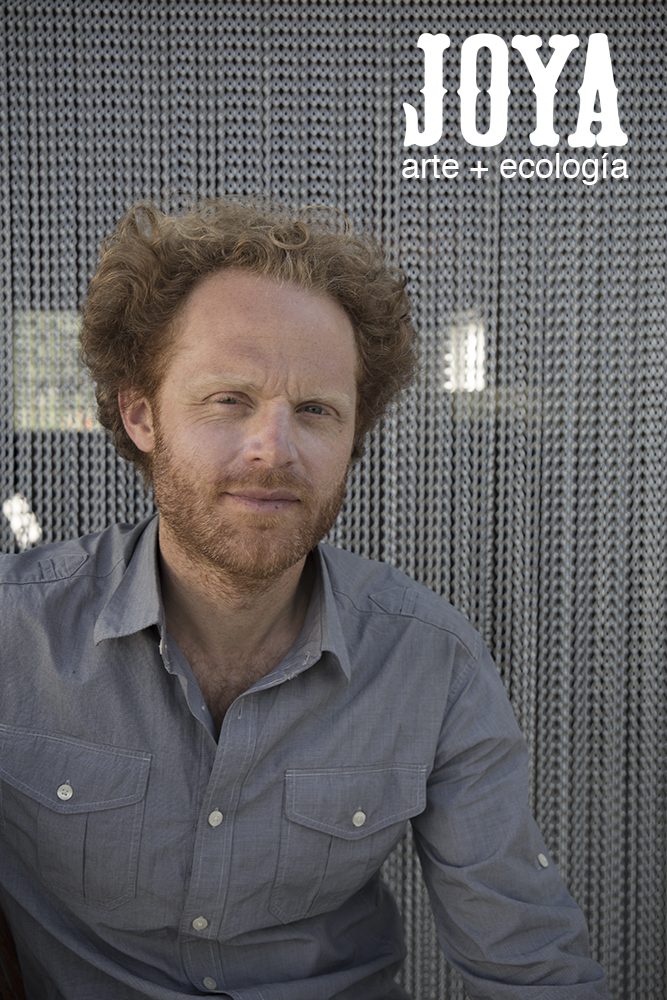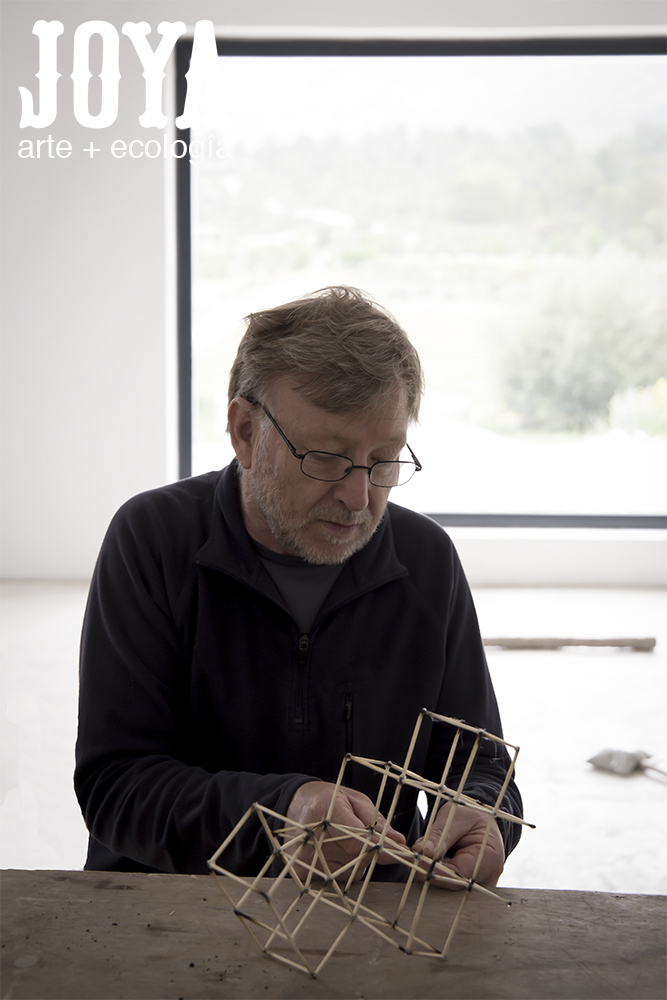“I am a site-specific artist, writer, curator and archaeologist who combines academic enquiry with artistic philosophy. My work transects the boundaries between art and science, it is a philosophy that draws upon phenomenology as a theoretical and methodological tool and is engaged with sensory response to and perception of place and elements. Much of my work is informed by the act of walking, cartography and topography as well as the element of water[1]. It is also concerned with the environment and the interplay between nature and culture. I came to Joya AiR with four sketchbooks of varying size and style, charcoal, sketching pens and camera with no other expectation other than knowing that what I would create would be about these parameters of my work and, more specifically, about place”.
“What followed was a two week immersion into the landscape, daily walks, drawing and writing. I became attuned to the topography of the land, its hill profiles and the shape of the valley of La Hoya de Carrascal. I climbed the high points of Sierra Larga and Las Almohallas and frequently traversed the low-lying barranco, the Rambla de Cajar. Walking, according to the writer Rebecca Solnit, is how the body ‘measures itself against the earth’[2], while the anthropolost Tim Ingold suggests that landscape can enter into our ‘muscular consciousness’[3]. This form walking is what I call an embodied cartography, a method in which the body perceives and understands place. As time passed and my connections to the landscape became more nuanced, I started to shape my movements according to the sensual characteristics of the winds of the Sirocco and the Levante (also known as the Solano). In the evenings, I would tilt my sight upwards and watch the lágrimas de San Lorenzo, the Perseid meteors dart across the clear, star illuminated sky whilst listening to the acoustic resonance of two scops owls calling from deep within the landscape. As much as my body recalled place, so the landscape recalled my presence in it. I encountered my perfectly preserved footprints along obscure routes that I had walked in previous days. I sat on boulders that remained clear of dust and debris from when I first positioned myself there and I navigated my way by visually wayfinding the particular characteristics of hill shapes and topographic features. I walked with a goat, who showed me pathways along mountain ridges and guided me through routes out of deep crevices and dense forests. And, as a walked, I became increasingly aware of being in an ancient landscape where others have been before me and of water and the environmental, social and cultural importance of it. I recalled Simon showing me the ancient hydrology system that is still visible in the landscape, I spent time with an alder tree that grows where a relic water source once flourished and I repeatedly walked a complex dry fluvial system, a negative space carved into the land and shaped by the action of moving water. Cortijada Los Gazquez (home of Joya: AiR) lies at a confluence of elements, time and space filling the night sky and shaping the contours of the land. It has many topographical stories to tell”.
“Joya: AiR / Joya: arte + ecología, is a truly international programme. During my residency I had the great pleasure of working alongside incredible artists from Argentina, The Netherlands, Portugal, America and the UK. There is something rather profound in creating an environment in which people come together to work and have space to think and create. We gathered in the evening over dinner, sharing stories, talking about our work and enjoying nourishing times of collegial creative conversations. What Simon and Donna have created, along with their twins Soli and Sesi (and during my residency the wonderful volunteer and artist Gwenda Jakobs), is a remarkable setting and a unique and immensely rewarding experience for artists”.
[1] Stevens, F. 2008. Elemental Interplay: the production, circulation and deposition of Bronze Age metalwork in Britain and Ireland. World Archaeology 40/2, 238-252.
[2] Solnit, R. 2001. Wanderlust: A History of Walking. Verso Books
[3] Ingold, T. 2000. The Perception of the Environment. Essays on Livelihood, Dwelling and Skill. Routledge Books
Fay Stevens








